
Master Bond offers an extensive line of stress absorbing adhesives with low modulus of elasticity and superior elongation properties. The special properties of these products allow them to dissipate stress and prevent cracking and fractures even in fragile materials.
Applications of Master Bond’s Low Stress Compounds
Master Bond's low stress adhesives are primarily used in optical, electro-optical, electronic, fiber-optic and photonic applications. These products are required when there is a large discrepancy between the thermal expansion coefficients of different materials, which can lead to cracking and delaminating when the materials are subjected to thermal cycling.
It is important to note that the length, width, thickness of the bond plays a key role in predicting/assessing the magnitude/distribution of stress. Adhesive selection criteria should include geometry of bond, operational conditions, temperature excursion limits, cure/processing time, handling considerations, adherence to specific substrate materials such as silicon, silver, nickel, invar, glass, aluminum, copper, fused quartz. Systems have been developed by Master Bond to resolve stress management issues even in confined spaces to ensure reliable device/assembly performance. Most noticeable has been their contribution in enabling electronic manufacturing companies to fabricate smaller, lighter weight products with increased processing power, functionality, durability. Step curing for select grades is recommended to alleviate residual stress concerns. These formulations have been designed to keep pace with the rapid changing technological needs of industry.
Properties of Master Bond’s Stress Dissipating Adhesive Systems
Master Bond’s low stress compounds adhere to metals, glass, ceramics, rubbers and most plastics. Specific grades offer:
- Low shrinkage
- Low outgassing
- Humidity and chemical resistance
- Resistance to vibration, impact and shock
- Resistance to thermal cycling
- Electrical insulation
- Thermal conductivity
- Electrical conductivity
- Thermal stability
Master Bond Popular Products
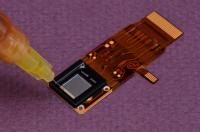 |
Super Gel 9AO Thermally conductive/electrically insulative urethane modified epoxy system. Soft and resilient. Solid dimensional stability. Easily repairable. Long working life. Low exotherm. Service temperature range -100°F to +200°F. Superior electrical insulation properties. Can be cast many inches in depth. Withstands thermal cycling and mechanical shock. |
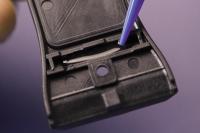 |
MasterSil 151 Optically clear, addition curing potting, encapsulation, sealing compound. Low shrinkage upon cure. Resists up to +400°F [+204°C]. Shore A hardness 50-60. Highly resistant to water. Long pot life. |
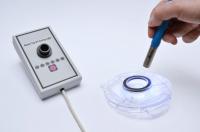 |
UV15X-6Med-2 UV curing system with high flexibility that is biocompatible per USP Class VI testing. Medium viscosity. Superior abrasion resistance. Non-yellowing. Reliable thermal and electrical insulator. Serviceable from -80°F to +250°F. |
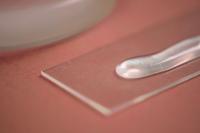 |
UV21 Highly flexible UV curable urethane elastomer compound. Used for high performance seals, gaskets, bonding and protective coating applications. Fast curing at room temperature. Superior chemical resistance. Shore A hardness 45-55. Elongation over 260%. Viscosity 30,000-38,000 cps. Serviceable from -65°F to 250°F. |
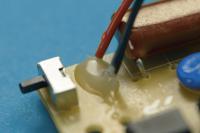 |
EP88FL Low viscosity, optically clear adhesive. Resistant to thermal cycling and thermal shock. Highly desirable Shore D hardness range. Bonds well to dissimilar substrates. Superior electrical insulation properties. Service temperature range from 4K to +250°F. One to one mix ratio by weight or volume. |
